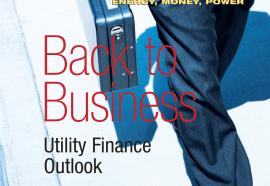Transactions (November 2010)
NRG buys Green Mountain Energy; Sempra divests domestic retail commodity operation, buys back $500 million in shares; TransCanada sells $1 billion in 10-year notes; Entergy floats $1.5 billion in four tranches; Exelon sells $900 million in two bond offerings; plus issues by Southern Company, Edison International, Nevada Power and CMS.






